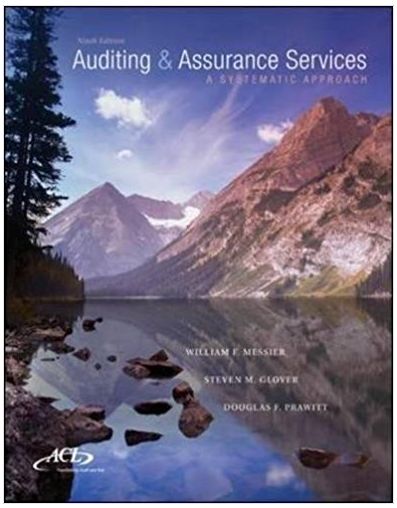Question
Tax Strategies for Business Planning and Investment Tax Planning Case II: Entity Selection Weve received an inquiry from a client and wed like you to
Tax Strategies for Business Planning and Investment
Tax Planning Case II: Entity Selection
Weve received an inquiry from a client and wed like you to draft a memorandum indicating how we should respond to these client inquiries. The inquiry concerns the formation of a business and our analysis of the impact various entity types might have on the business.
Please format your memorandum to Identify significant tax and nontax issues or concerns that may differ across entity types and discuss how they are relevant to the choice of entity decision for the clients business. Include a brief summary of the inquiry, your analysis of the inquiry, the issues posed, any relevant computations and your recommendations. Please include your computations directly in your memorandum and do not attach them in a separate Excel spreadsheet.
Please format the memorandum as follows:
MEMORANDUM
To: Eugene Kilo, Smith Tax Consultants
From: [Team members, provide your own titles]
Re: Various Tax Matters
Date: [Applicable Date]
Martha Taylor is currently employed by the Maryland Chamber of Commerce. While she enjoys the relatively short workweeks, she eventually would like to work for herself rather than for an employer. In her current position, she deals with a lot of successful entrepreneurs who have become role models for her. Martha has also developed an extensive list of contacts that should serve her well when she starts her own business.
It has taken a while but Martha believes she has finally developed a viable new business idea. Her idea is to design and manufacture cookware that remains cool to the touch when in use. She has had several friends try out her prototype cookware and they have consistently given the cookware rave reviews. With this encouragement, Martha started giving serious thoughts to making Cool Touch Cookware (CTC) a moneymaking enterprise.
Martha had enough business background to realize that she is embarking on a risky path, but one, she hopes, with significant potential rewards down the road. After creating some initial income projections, Martha realized that it will take a few years for the business to become profitable. After that, she hopes the skys the limit. She would like to grow her business and perhaps at some point go public or sell the business to a large retailer. This could be her ticket to the rich and famous.
Martha, who is single, decided to quit her job with the state Chamber of Commerce so that she could focus all of her efforts on the new business. Martha had some savings to support her for a while but she did not have any other source of income. Martha was able to recruit Linda and Mike to join her as initial equity investors in CTC. Linda has an MBA and a law degree. She was employed as a business consultant when she decided to leave that job and work with Martha and Mike. Lindas husband earns around $300,000 a year as an engineer (employee). Mike owns a very profitable used car business. Because buying and selling used cars takes all his time, he is interested in becoming only a passive investor in CTC. He wanted to get in on the ground floor because he really likes the product and believes CTC will be wildly successful. While CTC originally has three investors, Martha and Linda have plans to grow the business and seek more owners and capital in the future.
The three owners agreed that Martha would contribute land and cash for a 30 percent interest in CTC, Linda would contribute services (legal and business advisory) for the first two years for a 30 percent interest, and Mike would contribute cash for a 40 percent interest. The plan called for Martha and Linda to be actively involved in managing the business while Mike would not be.
The three equity owners contributions are summarized as follows:
| Martha Contributed | FMV | Adjusted Basis | Ownership Interest |
| Land (held as investment) | $120,000 | $70,000 | 30% |
| Cash | $30,000 | ||
| Linda Contributed | |||
| Services | $150,000 | 30% | |
| Mike Contributed | |||
| Cash | $200,000 | 40% |
Working together, Martha and Linda made the following five-year income and loss projections for CTC. They anticipate the business will be profitable and that it will continue to grow after the first five years.
| Cool Touch Cookware 5-Year Income and Loss Projections | ||||||||||||
|
With plans for Martha and Linda to spend a considerable amount of their time working for and managing CTC, the owners would like to develop a compensation plan that works for all parties. Down the road, they plan to have two business locations (in different cities). Martha would take responsibility for the activities of one location and Linda would take responsibility for the other. Finally, they would like to arrange for some performance-based financial incentives for each location.
To get the business activities started, Martha and Linda determined CTC would need to borrow $800,000 to purchase a building to house its manufacturing facilities and its administrative offices (at least for now). Also in need of additional cash, Martha and Linda arranged to have CTC borrow $300,000 from a local bank and to borrow $200,000 cash from Mike. CTC would pay Mike a market rate of interest on the loan but there was no fixed date for principal repayment.
Step by Step Solution
There are 3 Steps involved in it
Step: 1

Get Instant Access to Expert-Tailored Solutions
See step-by-step solutions with expert insights and AI powered tools for academic success
Step: 2

Step: 3

Ace Your Homework with AI
Get the answers you need in no time with our AI-driven, step-by-step assistance
Get Started


